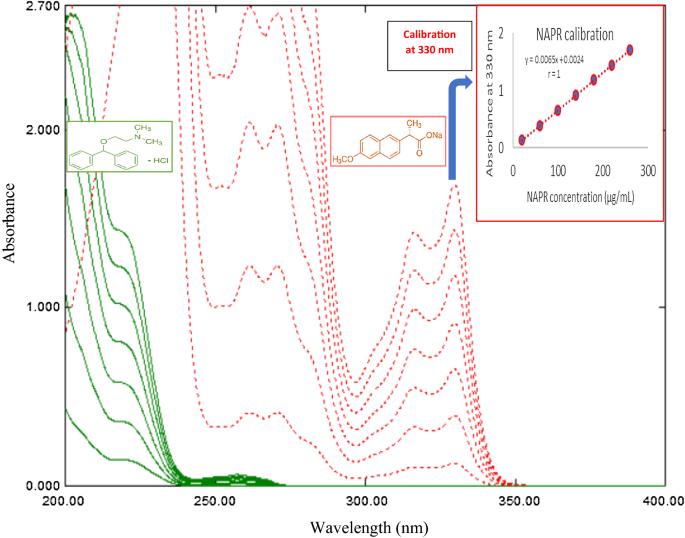
Accurate quantification of bacosides, the primary bioactive compounds in Bacopa monnieri, is essential for ensuring product efficacy, clinical reliability, and regulatory compliance in herbal nootropic formulations.
Bacosides mainly dammarane-type triterpenoid saponins such as Bacoside A3, Bacopaside I, and Bacopaside II are responsible for the herb’s neuroprotective and cognitive benefits. However, their structural diversity and low native UV absorbance make analytical quantification challenging.
Among the methods used, UV spectrophotometry and High-Performance Liquid Chromatography test (HPLC), particularly the USP-validated HPLC method, represent the two principal analytical approaches.
Understanding their fundamental differences is critical to interpreting results accurately and ensuring standardization credibility.
UV Spectrophotometry: Principle and Limitations

UV spectrophotometry is a traditional, rapid method for estimating bacosides based on their absorbance of ultraviolet light. The technique involves measuring the intensity of light absorbed at a particular wavelength and correlating it with concentration through Beer-Lambert’s Law. However, bacosides inherently exhibit weak UV chromophores because of their saponin structure, which lacks extensive conjugated double bonds that strongly absorb in the UV range.
To compensate for this, earlier methods chemically converted bacosides into ebelin lactones, derivatives with higher UV activity. Although this allowed for measurable UV response, the indirect conversion and lack of molecular resolution rendered the results non-specific.
Key scientific limitations of UV spectrophotometry for bacoside quantification include:
- Lack of compound specificity: The UV method measures total absorbance from all compounds that absorb near the set wavelength (usually around 205–210 nm). This includes impurities, degradation products, and non-bacoside saponins, leading to false high or low values.
- Variable response factors: Each bacoside (A3, II, X, and others) has a different molar absorptivity coefficient, so assuming a uniform response introduces significant error.
- No compound differentiation: UV spectrophotometry cannot separate overlapping compounds, making it impossible to verify which bacosides are actually present or in what proportion.
- Insensitive to isomeric variations: Structural isomers such as Bacoside A and B produce nearly identical spectra, masking chemical diversity.
Thus, while UV analysis offers simplicity, speed, and low cost, it fails to deliver the specificity, accuracy, and reproducibility demanded for clinical-grade herbal extracts.
HPLC Test (USP Method): Precision Through Chromatographic Resolution

High-Performance Liquid Chromatography test (HPLC) overcomes these analytical constraints through chromatographic separation, providing precise identification and quantification of individual bacosides.
The USP-validated HPLC method for Bacopa monnieri employs a stainless-steel reverse-phase chromatography column (C18) with isocratic elution and UV detection at 205 nm. Each bacoside is separated according to its polarity and molecular interaction with the column matrix, generating distinct retention times for compounds such as Bacoside A3, Bacopaside I, and Bacopaside II.
The HPLC approach delivers multiple scientific advantages:
- High specificity: Separation allows the identification of each constituent compound, minimizing interference from unrelated plant metabolites or excipients.
- Quantitative accuracy: Calibration with individual bacoside standards ensures true concentration values rather than aggregated estimates.
- Reproducibility: Automated instrumentation and controlled solvent gradients eliminate variability across runs and operators.
- Regulatory compliance: The USP method defines validated operational parameters, retention times, resolution, peak purity criteria, and relative standard deviations, ensuring consistency across laboratories.
- Structural verification: Chromatographic peaks can be confirmed via co-elution studies or coupled LC-MS chemical analysis, validating compound identity with structural fingerprints.
In addition, the USP HPLC method includes system suitability testing, linearity verification (across standard concentrations), and specificity testing (to rule out interference). Extraction recovery and inter-day precision are also routinely validated, ensuring data integrity in every step of quality control.
Comparative Superiority: HPLC Test vs UV Spectrophotometry
| Parameter | UV Spectrophotometry | HPLC (USP Method) |
|---|---|---|
| Principle | Measures total UV absorbance of compound mixture | Separates and quantifies individual bacosides based on chromatographic retention |
| Specificity | Low; non-bacosides and impurities may interfere | High; identifies each constituent separately |
| Accuracy | Low to moderate; aggregate value | High; quantifies individual bacosides precisely |
| Reproducibility | Variable; operator and wavelength sensitivity | Consistent; validated by USP protocol |
| Analytical Output | Total “bacoside content” (%) | Distinct bacoside profile with peak resolution |
| Typical Use | Preliminary screening, cost-sensitive quality checks | Regulatory compliance, clinical research, standardization |
| Validation Level | Non-specific, lacks USP harmonization | Fully validated, globally accepted (USP method) |
From a scientific standpoint, HPLC is the superior analytical method because it matches the phytochemical complexity of Bacopa monnieri with adequate resolution capability. It not only quantifies total bacoside concentration but also elucidates the qualitative fingerprint that defines clinically validated extracts.
Why Analytical Methodology Determines Product Credibility
Accurate bacoside quantification is not merely an academic exercise, it directly influences clinical efficacy, safety, and consumer trust.
Herbal supplements standardized via UV spectrophotometry often report inflated bacoside percentages (e.g., 50–60%), yet lack supporting chromatographic evidence. This reduces traceability and compromises dose reproducibility.
In contrast, HPLC-verified profiles establish consistency between research outcomes and marketed products, a requirement for regulatory submissions, clinical study replication, and pharmacovigilance documentation.
BACOMIND® vs Generic Bacopa: Analytical and Clinical Superiority
BACOMIND® epitomizes analytical excellence and clinical reliability in Bacopa monnieri extracts. Unlike generics relying on UV-based estimations, BACOMIND® adheres to HPLC standardization (USP method), ensuring precision, reproducibility, and validated efficacy.
1. Standardized and Consistent Bacoside Profile
- BACOMIND® is standardized for nine specific active markers, including Bacopaside I, II, X, Bacoside A3, and Bacopasaponin C.
- Quantification is performed through HPLC instruments and corroborated by HPTLC for identity confirmation.
- This ensures batch-to-batch consistency, stable therapeutic potency, and clinical repeatability.
Generic Bacopa extracts, by contrast, display wide variability in bacoside composition due to non-specific UV quantification and inconsistent raw material sources.
2. Clinical Validation Across Age Groups
- Validated through multiple human clinical trials, Natural Remedies Human Health’s BACOMIND® demonstrates significant improvements in memory, attention, and learning across both adult and pediatric populations.
- It remains the only Bacopa extract tested in children with ADHD, showing measurable cognitive enhancement and a favorable safety and tolerability profile.
- Generic extracts fail to demonstrate such reproducibility, owing to compositional variability and lack of defined bacoside markers.
3. Clean Label and Sustainable Sourcing
- BACOMIND® ensures farm-to-formula control, sustainable harvesting, and minimal environmental impact.
- Free from synthetic additives, allergens, and harsh solvents, it aligns with growing clean-label and ethical sourcing demands.
- Generics often lack transparency regarding origin, extraction solvents, and conservation practices.
4. Regulatory and Sensory Advantages
- BACOMIND®’s compliance with USP analytical criteria facilitates its acceptance in regulated markets such as the U.S., EU, and Australia.
- With a mild taste and superior organoleptic properties, it integrates seamlessly into capsule, gummy, or beverage formulations, unlike many bitter-tasting generic Bacopa extracts.
Summary
From an analytical chemistry perspective, HPLC (USP method) is the definitive gold standard for bacoside chemical analysis. It delivers specificity, accuracy, and reproducibility unmatched by UV spectrophotometry, which suffers from interference, overestimation, and lack of molecular resolution.
BACOMIND® leverages this advanced methodology, coupled with clinical validation, transparent sourcing, and full-spectrum standardization, to set itself apart as a scientifically authenticated Bacopa monnieri extract. It embodies reliability from bench to bottle, ensuring that consumers receive the true neurocognitive and adaptogenic benefits of Bacopa supported by quantifiable scientific evidence.
In essence, while spectrophotometric assays may “measure,” HPLC test reveals, defining the chemical integrity and therapeutic credibility of Bacopa monnieri extracts. And with that precision, Bacomind® stands as the benchmark for Bacopa with proof, standardized by science, validated by clinical results, and trusted across global health markets.
FAQs
1. What are bacosides, and why is their chemical analysis important?
Bacosides are the key active compounds in Bacopa monnieri, known for cognitive and neuroprotective effects. Accurate chemical analysis ensures product efficacy, regulatory compliance, and clinical reliability.
2. How does UV spectrophotometry differ from HPLC test in analyzing bacosides?
UV spectrophotometry estimates total absorbance but cannot differentiate individual bacosides. HPLC chromatography separates and quantifies each compound, offering precise identification and measurement.
3. Which method is more accurate for bacoside quantification?
The HPLC test is more accurate. It uses validated standards to quantify individual bacosides, while UV spectrophotometry methods often overestimate due to lack of specificity and interference.
4. What are the advantages of using the USP HPLC method?
The USP High Performance Liquid Chromatography test offers high specificity, accurate quantification, reproducibility, and regulatory acceptance. It ensures consistency and traceability in Bacopa products.
5. Can UV spectrophotometry reliably replace HPLC for routine testing?
No. While useful for quick screening, UV lacks the precision and specificity of HPLC. For reliable, clinically valid results, HPLC is the preferred method.
